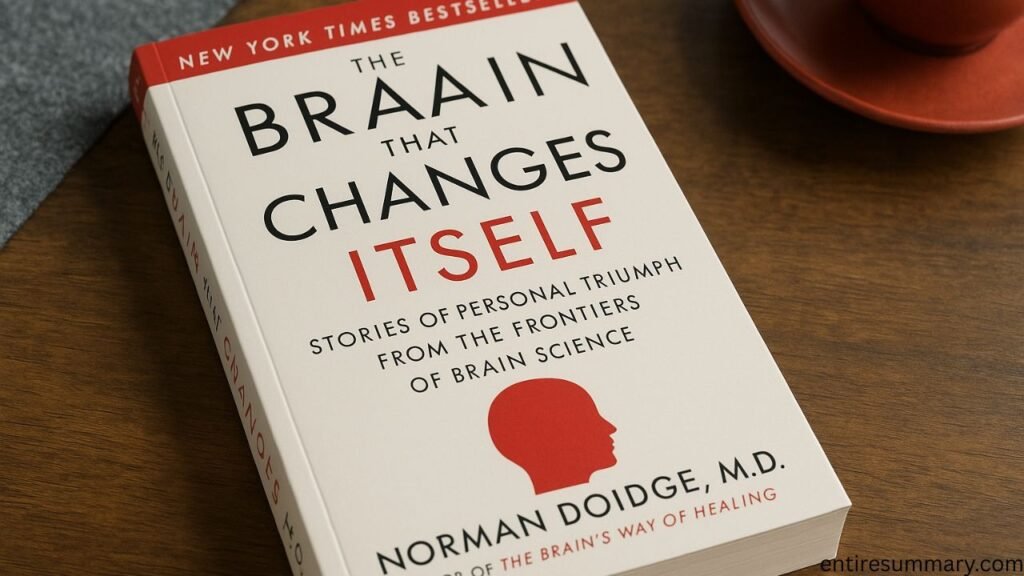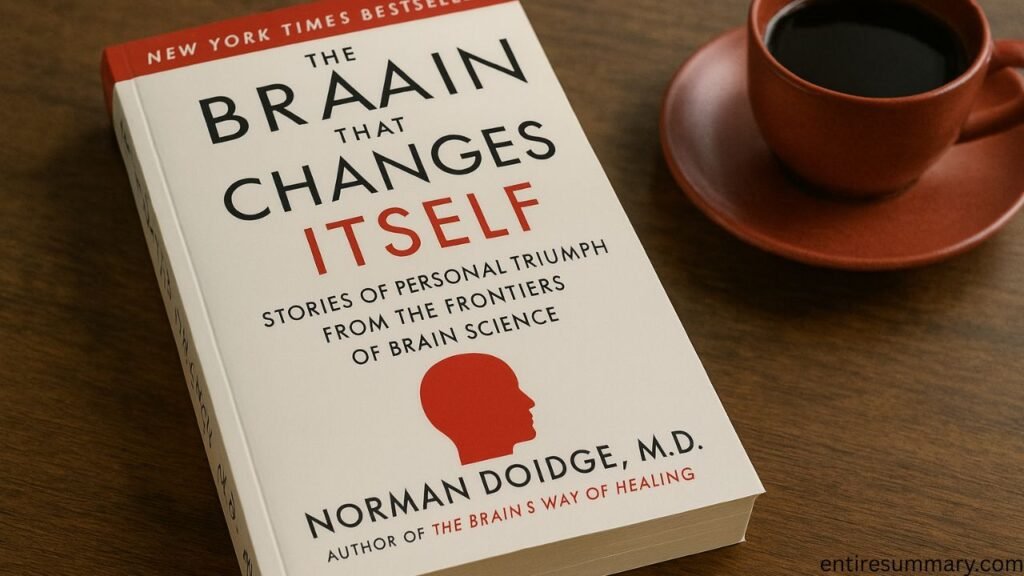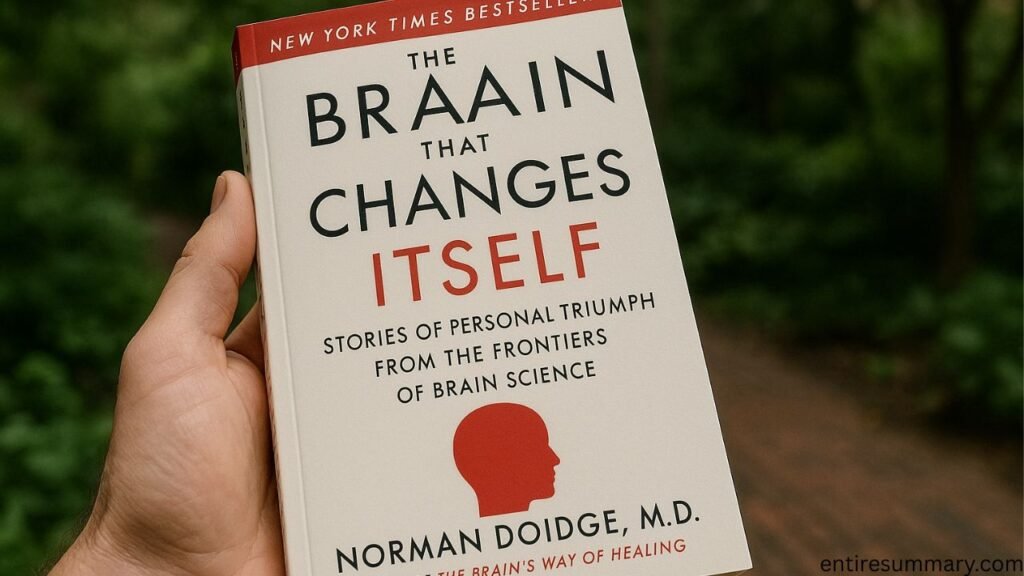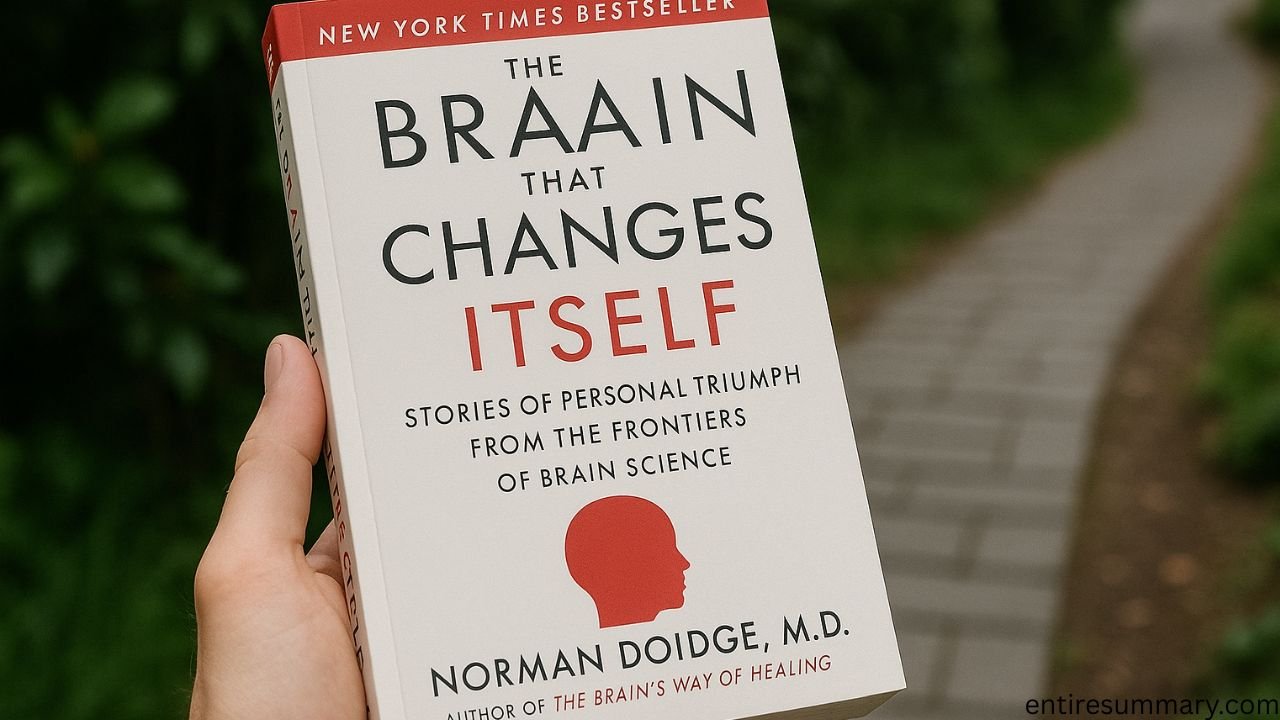“The Brain That Changes Itself: Stories of Personal Triumph from the Frontiers of Brain Science” by Norman Doidge is a seminal non-fiction work that introduced the concept of neuroplasticity to a wide audience. Published in 2007, this book is a captivating blend of neuroscience and human stories, showing us that the brain is not a static organ but a dynamic, ever-changing landscape capable of rewiring itself. Doidge, a psychiatrist and psychoanalyst, masterfully translates complex scientific ideas into an accessible narrative, demonstrating the brain’s incredible capacity for adaptation and healing.
The first half of The Brain That Changes Itself lays the groundwork for understanding what neuroplasticity truly means. Doidge begins by challenging the long-held dogma that the adult brain is fixed and unchangeable. For centuries, the scientific community believed that once the brain reached maturity, its structure was permanent. Doidge, however, presents a series of fascinating case studies that prove this belief is fundamentally wrong.
He introduces us to pioneers in the field, like Michael Merzenich, who conducted groundbreaking experiments that showed how the brain’s “maps” of the body and senses are not fixed but can be changed through experience. For example, he describes how a monkey’s brain remapped itself to allocate more space to a finger that was being used more, a simple but powerful demonstration of the brain’s adaptability.
Also read: /the-tell-tale-brain/
Doidge then brings these ideas to life through stories of individuals who have harnessed neuroplasticity to overcome severe neurological conditions. He tells the story of a woman named Cheryl Schiltz who, after a stroke, was left with a debilitating balance disorder. Through a seemingly simple device that used a tongue-based sensory feedback system, she was able to train her brain to relearn its sense of balance. This astonishing case shows us that a different part of the brain can take over the function of a damaged part.
Another powerful story is that of a man who regained his sight after being blind for years, not through a surgical procedure but through a device that converted images into patterns on his tongue, effectively teaching his brain to “see” with a new sensory input. These stories are not just medical marvels; they are a testament to the brain’s inherent ability to heal and reorganize itself in the face of injury and disability. The book shows that the brain is not a rigid computer with a fixed set of programs but a living, breathing organ that learns, adapts, and changes based on what we do and think.

The second half of the book The Brain That Changes Itself
The second half of The Brain That Changes Itself delves into even more profound applications of neuroplasticity, exploring how it can be used to treat a wide range of conditions, from learning disabilities to mental illnesses and even aging. Doidge introduces us to Dr. Edward Taub, a scientist who developed Constraint-Induced Movement Therapy (CI therapy) to help stroke patients regain function in a paralyzed limb.
The therapy works by physically restraining the good limb, forcing the patient to use the damaged one. This intensive practice stimulates the brain to remap itself, creating new neural pathways that restore movement and sensation. This approach was revolutionary because it directly contradicted the old belief that after a certain period, recovery from stroke was impossible.
Doidge also explores the connection between neuroplasticity and human relationships, love, and trauma. He discusses how our brains are wired to learn from and adapt to our social environments. This explains why certain thought patterns or emotional responses become deeply ingrained. He also shares the story of a man with obsessive-compulsive disorder (OCD) who learned to manage his condition by using a form of mental discipline that essentially rewired his brain’s automatic responses. The book suggests that our mental habits, both good and bad, are physical manifestations of neural pathways.
By consciously changing our behaviors and thoughts, we can physically change our brains. The book also touches upon the darker side of neuroplasticity, showing how the brain can be molded by negative experiences and trauma, but always with the hopeful message that it can also be changed for the better. The resolution of these stories is not a magic cure but a powerful illustration of the principle that conscious effort and focused attention can create lasting physical change in the brain.
Key Takeaways
The Brain is Not Fixed: The most important lesson is that the adult brain is not a static organ. It is a plastic, dynamic system that can change its structure and function throughout life.
Habits Shape the Brain: Our thoughts, actions, and habits—good and bad—physically mold our neural pathways. By being mindful of our routines, we can consciously shape our brains for the better.
Healing is Possible: The Brain That Changes Itself offers a hopeful message for people with neurological issues, demonstrating that conditions previously thought to be incurable can be improved or even healed through targeted therapies that harness the power of neuroplasticity.
Conscious Effort is Key: The success stories in the book all share a common theme: focused attention and intentional effort are required to create new, positive neural connections. This means that personal agency plays a crucial role in brain change.
Our Environment Matters: The Brain That Changes Itself highlights how our social, emotional, and physical environments continuously shape our brains, influencing everything from our emotions to our cognitive abilities.

FAQs About The Brain That Changes Itself
What is neuroplasticity in simple terms?
Neuroplasticity is the brain’s ability to reorganize itself by forming new neural connections throughout life. It’s the brain’s way of adapting and changing.
How is this book different from other books on brain science?
While many books describe how the brain works, “The Brain That Changes Itself” focuses on real-life stories and case studies that demonstrate how the brain can be changed, providing a more hopeful and practical perspective.
Did the scientists in the book have to overcome a lot of resistance?
Yes, the book highlights how many of these pioneers faced significant skepticism and resistance from the scientific community, which was deeply committed to the old idea of the fixed brain.
How can I use the principles of neuroplasticity in my own life to learn new skills?
The book suggests that focused, deliberate practice is key. By consistently and attentively practicing a new skill, you can physically strengthen the neural pathways associated with that skill, making it easier to perform over time.
Does neuroplasticity mean I can completely change my personality?
The book shows that while our habits and behaviors are deeply ingrained in our neural circuits, they can be changed with effort. It provides a hopeful outlook, suggesting we can work on aspects of our personality and mental habits that we want to improve.
Are there any downsides to neuroplasticity?
The book touches on the “dark side” of neuroplasticity, explaining how the brain can also be molded by negative experiences, leading to bad habits or persistent negative thought patterns. This shows that the brain is always changing, for better or worse.
What is the book’s most significant takeaway?
The most important message is that we have far more control over our brains than we ever thought possible. Our actions, thoughts, and experiences are not just mental events; they are physically shaping our most important organ.
Final Thoughts
“The Brain That Changes Itself” is an eye-opening and inspiring read. It’s a book that’s not only scientifically sound but also full of hope and human compassion. It reminds us that our potential for growth and change is far greater than we have been led to believe. This book is a must-read, a solid 10/10 for me. If you enjoyed this, you should definitely pick up “My Stroke of Insight” by Jill Bolte Taylor.


